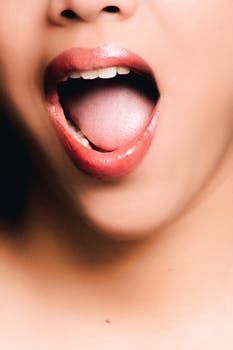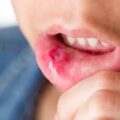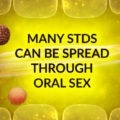Your mouth (and tongue) are lined with a special type of skin (mucosa), which looks (mostly) pink because it is thinner than your other skin. Some changes to your mouth lining can change its color to white a condition known as leukoplakia.
Why do people get white patches?
Having white spots in the mouth could be a sign of infection, trauma, tumor, inflammation, or other diseases arising from the activities of pathogens, such as bacteria, viruses, and fungi. The most common cause of white spots in the mouth is oral thrush, also known as candidiasis. Some of the other likely causes of white spots in the mouth are Mouth cancer, oral thrush, herpes, Strep throat, and tonsillitis. In addition, some people also develop white spots on their tongues. If their mouths get too dry and white spots develop on the side of the tongue, this presentation could be an ulcer or it could be oral hairy leukoplakia.
See: Moisturizer Withdrawal: Everything You Should Know
Oral Candidiasis -is typically caused by a fungal infection that develops on the mucous membranes of the mouth and is common among up to 90% of all people living with HIV/AIDS. It is also common in people with weakened or compromised immune systems as well as babies and the elderly. It can also be triggered by several factors such as antibiotics, some birth control pills, corticosteroids, pregnancy, carrying excess weight, or having pre-existing conditions such as diabetes, and psoriasis.
Tonsillitis– is inflammation of the tonsils, typically of rapid onset. It is a type that results from either a viral or bacterial infection of the tonsils. Most tonsil infections are caused by the Streptococcus bacterium, which is the same bacterium that causes strep throat. Inflammation of the tonsils causes them to become red and swollen with white or yellow spots. If it is a viral infection, it is treated with bed rest, hydration, and management of the fever. If it is a bacterial infection it will be treated with antibiotics. Tonsillitis is characterized by throat pain or tenderness, redness of the tonsils, a white or yellow coating on the tonsils, painful blisters or ulcers on the throat, headache, loss of appetite, ear pain, difficulty swallowing or breathing through the mouth, swollen glands in the neck or jaw area, fever, chills, bad breath.
Oral herpes – is an infection that can be caused by either herpes simplex virus type 1 or type 2. The virus causes painful sores on the upper and lower lips, gums, tongue, roof of the mouth, inside the cheeks or nose, and sometimes on the face, chin, and neck. It is characterized by a cold sore on the lips, fever blisters in the mouth, and white spots on the throat. Once you have the virus it often recurs up to four times a year. It is highly contagious and can be spread through oral sex. Treatment includes prescription medications and topical creams to alleviate symptoms, but the condition itself has no known cure.
Oesophageal Candidiasis and HIV
This is Candidiasis of the mouth and throat and is also called “thrush” or oropharyngeal candidiasis. It is one of the most common infections in people living with HIV/AIDS. If the spots spread to the back of the mouth and tonsils, it is known as oesophageal candidiasis. These spots look like cottage cheese and are difficult to scrape off. They can cover the tongue and the inside of the cheeks.
White Spots in the Mouth and HIV/AIDS
Candidiasis and many other oral conditions are very common in people with HIV and affect more than a third of HIV+ people due to their weakened immune system. Although yeast is found in most people’s bodies, a healthy immune system keeps it under control. Candida usually infects the mouth, throat, or vagina. It can occur months or years before other, more serious opportunistic infections. Despite the success that combination antiretroviral therapy has on many oral problems, these conditions are still prevalent with HIV.
Whatever the cause of the white spots, however, it is strongly advised that you get them checked out by your doctor who would examine your mouth to make a diagnosis. SEE: How To Get Rid Of Black Gums


![How To Cure A Sore [Strep] Throat Fast](https://www.publichealth.com.ng/wp-content/uploads/2018/07/How-To-Cure-A-Sore-Strep-Throat-Fast-120x120.jpg)


